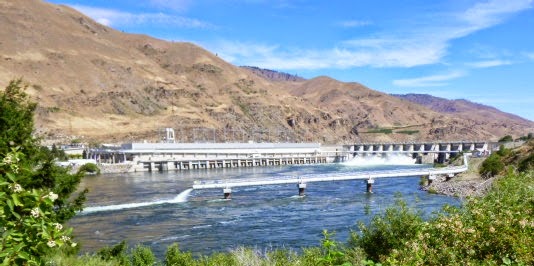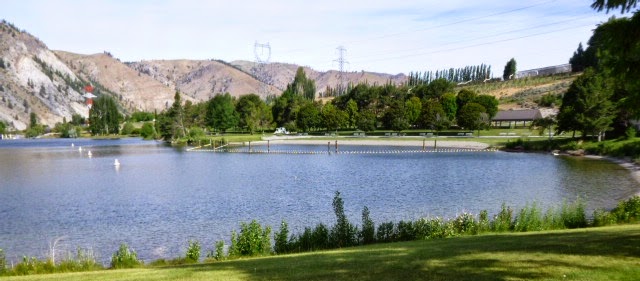David and Elaine relaxing on their patio.
We joined them there each evening, dining alfresco.
D and E, long term residents of Quincy, WA, spend their winters in Lake Havasu City (LHC). Before they retired, David was a school principal; Elaine owned and operated a flower shop. We spent a delightful 3 days with them, with the Cougar parked in their backyard. David and I, plus 2 other local guys that spend time in LHC, played Pickleball one morning while Trish and Elaine went to a quilt show in Moses Lake.
David and I also played Polish Golf, aka ladder-ball, a couple of afternoons. Being the tactful, modest person I am, I won't divulge who won the most games. We tried to get the ladies to join us but they opted out, preferring to get on with their locker-hooking, a new toy they found at the quilt show.
Quincy, population 7,000, has a lot going for it. Located in central WA on a major cross-country railroad, it's a perfect location for food processing, storage and shipping. Agribusiness giant, Simplot, has a large facility here, as do many similar companies. There's a state of the art, intermodal (shipping container), cold storage facility here that covers 7 acres. No, that's not a typo: it's really a 7-acre refrigerator. You can store food there, at temps ranging from 20 below to 50 above, in refrigerated shipping containers that can be loaded directly on to flatbed railroad cars and sent off to Chicago or New York. Cool, huh?
The big fridge, picture taken from Monument Hill, a few miles away
Most computer users know what 'the cloud' is but darn few know where it is. It's right here in Quincy - part of it anyway. The cloud is data storage, a place to stash your personal computer files, digital pictures etc; it can be used as backup or just to lighten the storage load on your PC. Microsoft, Yahoo, Intuit and several others have huge data centers here, attracted by the inexpensive electricity and the availability of water for cooling. Each facility has it's own massive generators that automatically kick in if there's a power failure, thus avoiding a cloudburst.
This outdoor fireplace resides in the corner of D and E's backyard. I grilled brats and pineapple slices in it one night, and David fired it up again on our last night so the ladies could roast marshmallows.

































